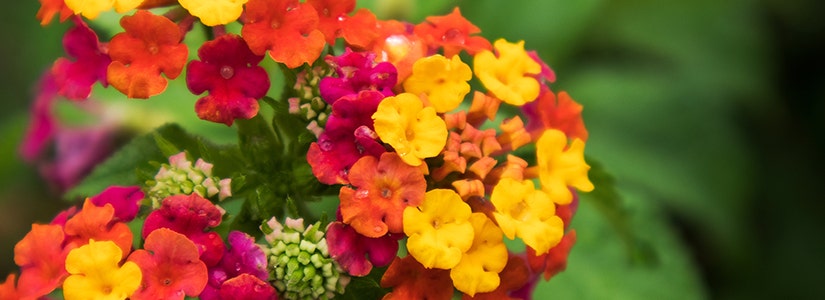

- Home
- Solution Center
- Learn
- Rose & Flower
- How To Buy Bedding Plants
How To Buy Bedding Plants
Before you join the frenzy of the spring plant shopping season, arm yourself with the knowledge you need to select the best and brightest bedding plants. You don't have to be an expert gardener to choose plants like one. Follow a few basic plant shopping steps, and you'll bring home outstanding bedding plants to grow your best garden ever.
Buying Plants with Potential
As you survey available bedding plants, look for these signs of good health:
Lots of Flower Buds
Choose plants loaded with flower buds. Given a choice between a budded plant and one in full bloom, buy the budded one.
Good to Know: Unless you need a specific bloom color, avoid buying plants with open flowers. Those blossoms need to fade before new flowers appear, creating downtime in the bloom display.
Healthy Leaves
Leaves shouldn't be wilted, spotted, sticky or insect-covered. For a typical bedding plant with green foliage, healthy leaves should have an even color tone. Yellow, purple-tinged or reddish leaves indicate trouble.
Good to Know: If you spot diseased plants in a cell pack, don't choose plants near the outbreak. If that's the only flat of that particular plant, choose a located farthest from the disease.
Roots & Soil
When plant shopping, gently slip plants from containers to examine roots. An even mix of white roots and soil signals a plant ready to take off after planting.
Good to Know: When you spy large bunches of roots and little soil, plants have been in containers too long. These plants will grow, but don't buy them unless you can plant immediately.
Sturdy Stems
Tall stems with few leaves have been in the pack too long. Buy healthy plants that have stocky stems with foliage from top to bottom.
Good to Know: Plants near the edges of a flat tend to be lankier, while plants in the center are typically more compact.
Plant Shopping Know-How
- Take boxes. Once you have purchased plants and have a carry-box, use it at the next place. It's not only earth-friendly, it means you'll have something to carry your plants. Many seasonal retailers don't offer boxes.
- Sort pots by size. Most plants are priced based on container size. In your cart, sort plants by pot size for a speedier check-out.
- Know the prices. This is vital with cell packs. Sometimes a three-cell pack costs as much as a four- or six-cell pack.
- Search for the right size. Some retailers sell large eight- or nine-cell packs, placing them out front to fuel impulse purchases. You'll likely find smaller, cheaper packs of the same plants stashed in the back of the garden center area.
- Double-check plant tags. Don't assume that every cell pack in a flat contains the same flower color. Check plant tags for each pack. Sometimes shoppers "misfile" plants.
- Shop early. Many plant outlets are seasonal, only carrying plants in spring. These retailers may provide inconsistent care and poor display conditions. To get the healthiest plants, learn when new shipments arrive and shop that day.
- Head straight home after buying plants. Don't leave annuals sitting in a car on a sunny day. If you must make a quick stop, park in the shade and crack windows to prevent heat build-up.














